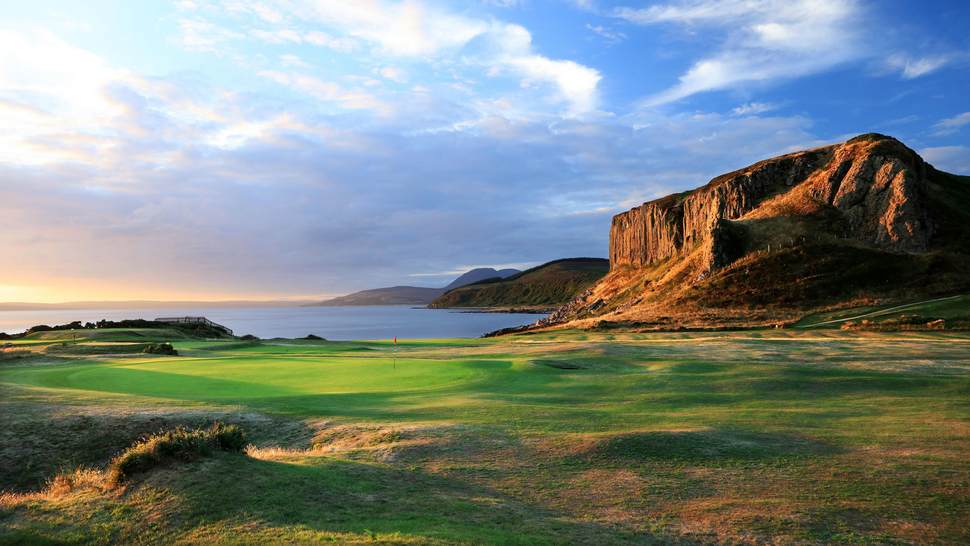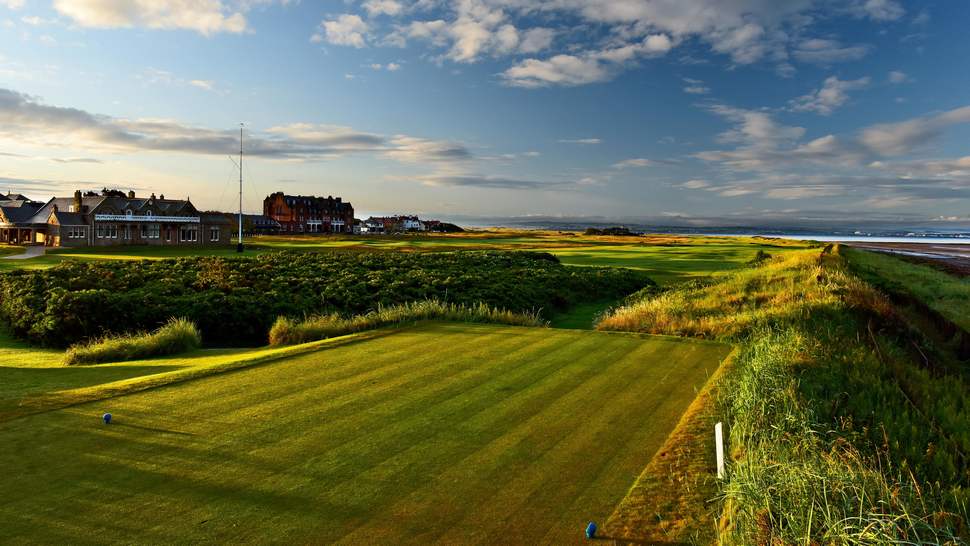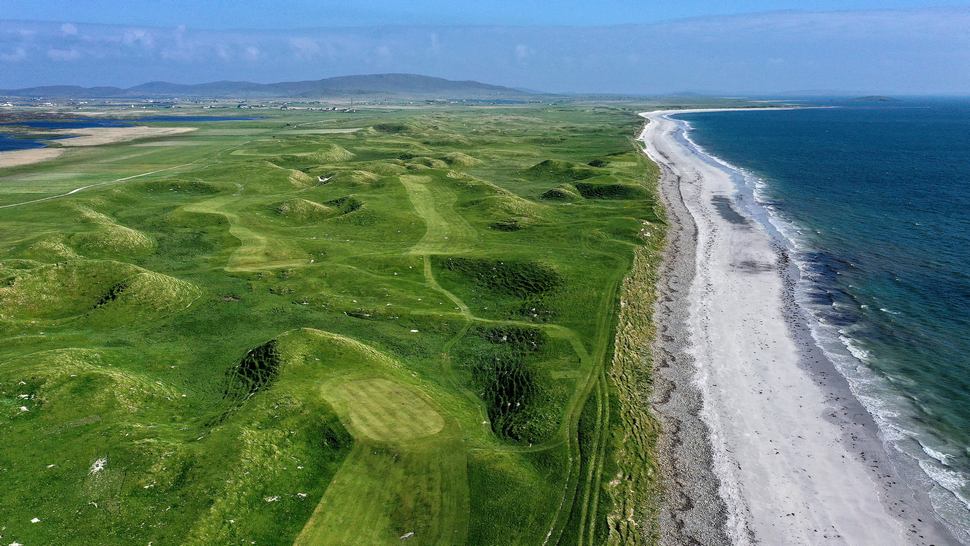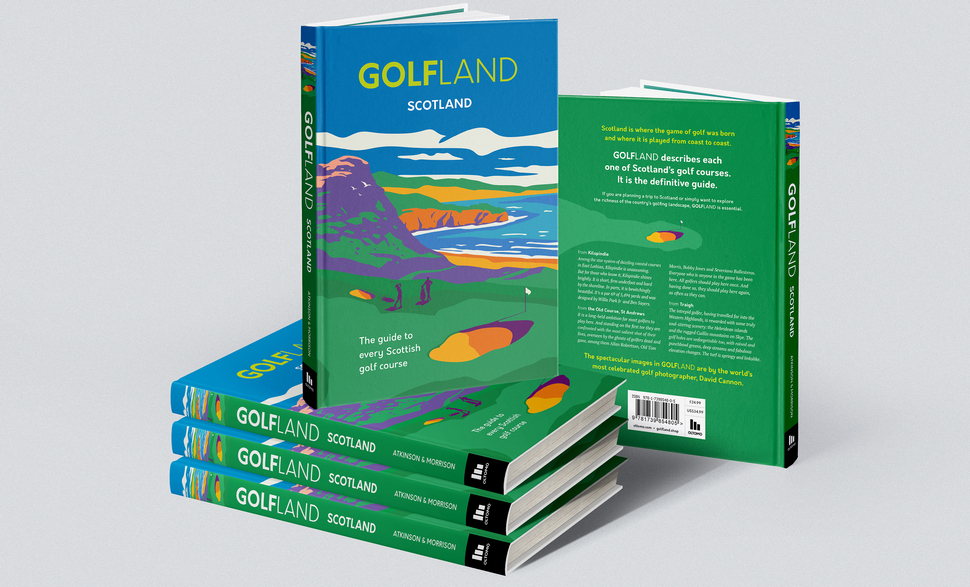Background
Michael Atkinson is the co-founder of Oltomo, a golf publishing company, which produces ‘Golfland Scotland’, the first comprehensive guide to all of Scotland’s golf courses to be produced in over two decades and featuring photography from the world-renowned David Cannon.
He is a regular contributing writer to golfing titles, celebrating the ‘early influencers’ of the game – those who helped to popularize the game around the world or had a significant impact on a particular element of golf.

***
What makes golf in Scotland so magical?
Whilst the origins of the sport of golf are much debated – the concept of stick and ball games has existed for many centuries across many nations around the world – the essence and blueprint of the game as we know and play it today are derived from Scotland. It is in Scotland that everything from the very rules that have formed the game to the diameter of a golf hole to the standardization of eighteen-hole golf courses has occurred.
Scotland has produced many of the most influential characters of the game, individuals whose influence lives on many years later – from the famed Grandfather of Golf, Old Tom Morris to James Braid to Dorothy Campbell to Agnes Grainger to Willie Park Junior to Dr Alister MacKenzie. It was these individuals who, as golf developed, inspired the game around the world and paved the way for its development into a global sporting giant.
It is for these reasons, that golf in Scotland is extra special and so magical. When you play in Scotland, you are surrounded by the history and heritage of the game.

You’ve been to every corner of the country – is there a specific locale you favor over others?
East Lothian, an area which includes my home course, Gullane, would be a favored locale. East Lothian claims Scotland’s ‘Golf Coast Road’, a thirty mile stretch from Musselburgh to Dunbar that showcases some of Scotland’s finest golf courses.
The golfing highway tees off at Musselburgh Links, a former host venue of The Open Championship on no fewer than six occasions between 1874 and 1889. As you head into Aberlady, on the left is Craigielaw, a course opened in 2001. Despite its youth, it has gained a strong reputation, hosting a number of national events. Aberlady itself is home to the characterful Kilspindie Golf Club. Keep heading towards Gullane and you pass the clubhouse of Luffness
New on the right. Gullane has three beautiful courses, simply named Gullane No.1, Gullane No. 2 and Gullane No. 3. Gullane No. 1 is magnificent, but each of the three is a test. The club has previously hosted the Scottish Open. On the edge of the village is Muirfield, home of the Honorable Company of Edinburgh Golfers and host to sixteen Open Championships.
Continue on and there is Archerfield Links Golf Club, the Renaissance Club and then the treat of North Berwick is still to come. More courses appear all the way to Dunbar Golf Club. Just a magnificent golfing part of Scotland.
What’s the biggest mistake golf visitors make when coming to Scotland?
The mistake is only to play the famous courses. Whilst the globally renowned courses will always be a delight to play, Scotland is awash with ‘hidden gems’ that provide equally as spectacular a golfing experience as those courses which enjoy greater prominence. One I always highlight as an example – Boat of Garten golf course in the Scottish highlands.
It won’t often make the itinerary of a golfing visitor to Scotland, but it should. Set with the backdrop of the glorious Cairngorm mountains, it’s a challenging 18-hole course which displays all the great course characteristics of its designer, the five-time Open champion, James Braid. Birch trees, heather and broom frame fairways.
Dog legs, blind shots, pot bunkers, two tiered greens. This course has it all. There are many other, ‘little known’ courses where a round will live long in the memory.
Describe the first time you played the Old Course at St Andrews and what you have learned from having played it countless times afterwards.
For lovers of the game, the opportunity to play the Old Course is the round of a lifetime. It is the most nervous of tee shots, driving off in front of the most famous clubhouse in the world, irons struck from historic turf, putts missed and made on iconic double greens.
It’s a privilege to play on the hallowed ground of the Old Course, one of the most historic and revered courses in the world. To realize how special it is, you only need to witness how it is viewed by golfing professionals.
To win an Open championship may be the highlight of their career, but to win on the Old Course is extra special.
Do you ever see The Open Championship returning to the Ailsa Course so long as Donald Trump owns the Turnberry property?
Turnberry first staged the Open in 1977 and it became the backdrop to one of the most memorable Opens ever staged, the ‘Duel in the Sun’ between the legendary players of Jack Nicklaus and eventual winner, Tom Watson.
It is a rightly celebrated and admired course with a stunning location. In terms of its future relationship with The Open, I believe the R&A has commented that the Open will not return to Turnberry until they are confident that the focus will be on the championship, the players and the course itself. I think they have therefore ruled it out for the foreseeable future.

What makes an Open Championship in Scotland more special than when held elsewhere?
The Open Championship is golf’s oldest major. It is an event founded in Scotland back in 1860 and played exclusively on links courses. The first 12 Opens were staged at Prestwick, the first St Andrews Open in 1873. Musselburgh Links hosted the championship in 1874. Muirfield subsequently joined as a host for the Open.
It wasn’t until 1894 that the Open was first staged outside of Scotland, at Royal St George’s. I think it’s this deep-rooted heritage of golf in Scotland and Scotland as the birthplace of the Open Championship, that makes it more special in Scotland than when held elsewhere.
So much of the focus for many visitors is checking off a bucket list of courses that have a higher profile. Name five sleeper courses you believe are rarely mentioned but provide a Scottish golf connection worthy of visiting?
Gullane No 3 – a Willie Park Jr designed links beauty. Quirky and engaging, immaculate with fast greens and enjoying spectacular views across the Forth back to Edinburgh’s Royal Mile.
Boat of Garten – a great James Braid designed course in the Scottish highlands with the
Cairngorm mountains as a backdrop.
Auchterarder – often overlooked as a result of the fame and glamour of the courses at neighbouring Gleneagles, but a charming heathland course in its own right.
Fortrose & Rosemarkie – Royal Dornoch, Nairn and Castle Stuart draw much of the attention in this area. They are magnificent. But Fortrose & Rosemarkie is a delightful links on the Chanonry Peninsula and equally deserving of a visit.
Balcomie Links at Crail – most focus on the more famous courses in St Andrews just over ten miles away. But the Balcomie Links at Crail provide a wonderful alternative, a course which has developed from the original layout of Old Tom Morris himself.

Given your understanding of the game and Scotland’s prime roots in golf – how do you think Old Tom Morris would view the sport if he were alive today?
I think Old Tom would be amazed by three areas.
First, the global spread of the game. In Old Tom’s era, the number of golf courses was still relatively limited, a few hundred. Now that figure is staggering, with more than 30,000 golf courses in all corners of the world.
Second, I think he would be intrigued by the evolution and technological advancement of golf clubs and golf balls in comparison to the hickories that he used to play the game.
Finally, I think he would be impressed by the condition of the courses. Courses were kept in much more primitive condition in the times of Old Tom Morris. The immaculate fairways and pristine greens of today, as a Keeper of the Green, would be of intrigue to Old Tom.
Does walking when playing provide the truest connection to golf?
I certainly love walking the fairways of a golf course, but I have also enjoyed many a round with a golf cart. The important thing is to enjoy the course, the company, the round. The great thing about golf is how it can be enjoyed at any age and across generations.
Golf carts have a great role in enabling golf to be played and enjoyed for longer, encouraging those who maybe can’t still walk a full 18 holes to get a full round with the benefit of a cart.
You can change one thing in golf unilaterally – what would it be and why?
Access to golf, especially for the younger generation. The game survives by encouraging the next generation to get involved in the sport. To do that, clubs, in particular, need to embrace junior golf and I think some have been and continue to be slow to do so.
We need to welcome junior members into clubs. Gullane would be a good example of a club which has successfully developed a very thriving junior section, which is great.

Related: Highland highlights
You’ve got one round to play in Scotland – where do you play and what three people, whether alive or dead, make up your foursome?
I would play at my home course, on Gullane No 1.
My fellow four-ball guests would be:
Tom Watson – ever since he nearly won The Open at Turnberry in 2009 at 59 years of age, I have hugely admired him and become fascinated by his extraordinary achievements. A victory at that Open in 2009 would have created one of the most iconic sporting moments of all time.
Not only was it inspiring to see him compete against a main field half his age, I hugely admired the grace and dignity in how Watson accepted defeat to Stewart Cink, who eventually won in playoff.
Walter Hagen – not only one of the greatest golfers of all time – amassing in an extraordinary career, two U.S. Opens, four Open Championships and five PGA Championship victories – but also a great character and showman, I can only imagine what great fun both on the course and reflecting on the round in the clubhouse afterwards over a drink.
Babe Didrikson Zaharias – Babe was the first American to win the British Women’s Amateur, which she did at Gullane in 1947. She was also one of the greatest female athletes of all time, her golfing career coming after she had already set world records and won gold medals in track & field at the Olympics. Her game was much admired and to see her play would be inspiring.

The Scottish golfer you most admire and why?
One Scottish golfer I greatly admire is Donald Ross. The professional at Royal Dornoch, he would eventually move to America in 1899 and become the professional at Pinehurst. He started to remodel and design courses and would ultimately become one of the most prolific golf course designers of all time, leaving a lasting legacy on the golfing world with creations across the globe. He remains one of Scotland’s greatest exports!
Pinehurst No. 2 has become the most celebrated course designed by Donald Ross and has gone on to host countless major events in global golf, including the U.S. Opens in 1999, 2005 and 2014, and set for 2024, as well as the Ryder Cup in 1951 and the U.S. Women’s Open Championship in 2014.

